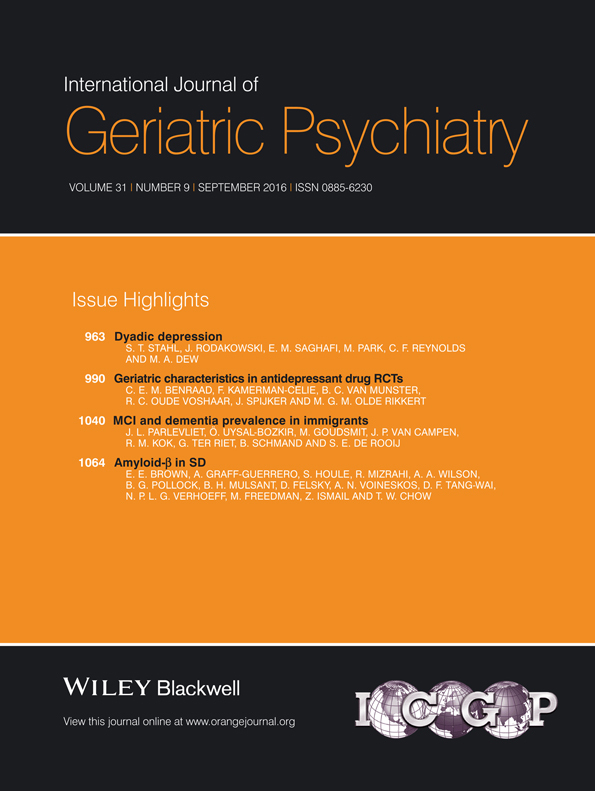Caregiver burden in family carers of people with dementia with Lewy bodies and Alzheimer's disease
Abstract
Objective
To characterise the differences in caregiver distress between carers of people diagnosed with dementia with Lewy bodies (DLB) and people with Alzheimer's disease (AD), with a view to differentiating and improving support for caregivers.
Methods
This study is a part of two larger Norwegian studies, DemVest (n = 265) and The Norwegian Dementia Register (n = 2220), with data from caregivers and people diagnosed with AD (n = 100) and DLB (n = 86) between 2005 and 2013. The average age was 74.9 years (SD = 7.8). Caregiver distress was rated by the Relative Stress Scale. Diagnosis of the person receiving care was based on a comprehensive standardised assessment program (International Classification of Diseases, Revision 10 or Diagnostic and Statistical Manual for Mental Disorders, fourth edition). Additional data collected from people receiving care were neuropsychiatric symptoms, comorbidity and activities of daily living (ADL) score. Linear regression analyses were applied, first unadjusted and then in stepwise-adjusts in addition to descriptive analyses.
Results
Caregivers to people with AD (20.2%) and 40% of caregivers for people with DLB experienced moderate or high caregiver burden with an increased risk of psychiatric disorders in the early stage of dementia. High Relative Stress Scale (RSS) total scores in caregivers was significantly associated with neuropsychiatric symptoms (Neuropsychiatric Inventory, p = 0.004) and also with impaired ADL functioning (Rapid Disability Rating Scale-2, p < 0.0005).
Conclusion
Caregiver distress differed (RSS total, p = 0.005) between people caring for someone with AD (15.0) and those caring for someone with DLB (19.9). These findings have direct implications for the needs and resources that could be available for these individuals and indicate the need for further research into caregiver burden in carers to people with DLB. Copyright © 2016 John Wiley & Sons, Ltd.
Ethics and dissemination
Cohorts were ethically approved by the Regional Ethics Committee for Medical Research Ethics in Eastern and Western Norway.




